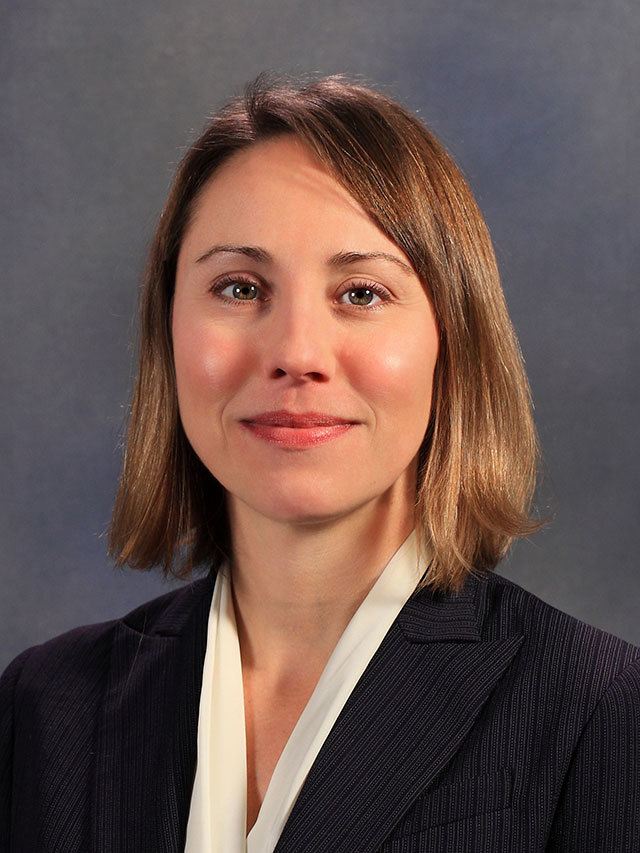The new head of Washington State Ferries has been on the job for only two weeks, but already has plans for public outreach and continuing what former head Lynne Griffith started.
As of Feb. 1, Amy Scarton is the Washington State Department of Transportation’s (WSDOT) assistant secretary for Washington State Ferries (WSF). The position puts her in charge of the state’s 22 vessels, 1,800 employees and all that comes with running the nation’s largest ferry system. In an interview last week, nine days into her new career, she talked about the work that Griffith had done, including dramatically reducing the number of canceled sailings due to lack of crew. According to WSF, under Griffith, these missed sailings dropped nearly 70 percent over the previous 26-month period before Griffith.
“My first order of business is to stay the course,” Scarton said. “The work Griffth and her team has done has been amazing. There’s been a turnaround at Ferries.”
She explained that the changes under Griffith can be attributed to the fact that she promoted many employees, including bringing captains into the department’s executive team. She said moves such as the ones Griffith took allow for listening and communication across management and between management and employees on the boats.
“I’m coming in to learn what is going well and to listen to employees, listen to commuters, listen to community members and take their lead in helping me craft the future of Ferries,” she said.
When asked about the triangle route, its problems and potential solutions by way of a newly created task force, she acknowledged the route is the lowest performing of the system’s 10 routes. She said she plans to ride the route and talk to commuters and employees this week, but said the route’s problems primarily stem from Fauntleroy’s outdated dock.
“Fauntleroy, the dock was built in the 50s and hasn’t changed,” she said. “Communities have changed, vessel traffic has changed, but it hasn’t.”
She said that in addition to the route’s task force, Ferries needs to update its long-range plan — an undertaking that happens once every decade. The last update was in 2009, and Scarton said the system is due to look at it again and address everything from terminals and vessel routes, to commuters and tourism.
“We’re going to engage the community and other transit agencies and biking and walking advocacy groups, and together, over the next year and a half, plan for the future,” she said.
Another major priority for Scarton is to continue to improve employee retention and efficiency by cross-training employees who are already part of the system.
“About 50 percent of the ferry system’s entire workforce is close to retirement age,” she said. “We need to retain our skilled employees and recruit new ones. When we drastically reduced missed sailings due to lack of crew, we didn’t hire more people, it was cross-training, being as efficient as possible.”
While her sights are set on the future, she said the present has already been full of challenges, including last Monday’s large snowstorm and the pulling of the Sealth off the triangle route on Feb. 2.
“A lot has happened in the last nine days,” she said Thursday. “Look at Monday, there was a huge storm, we had 400 sailings and didn’t miss any. Another (challenge) was pulling the Sealth out early in my first week of work. What happened when they pulled boat out. They got it fixed, did sea trials, got Coast Guard to approve them and it was up and running before rush hour.”
Scarton, 40, is taking it all in stride as she is no stranger to the world of public transportation or the politics that come with a government entity as large as Ferries. After graduating from Duke law school, she spent 15 years in Washington D.C. as an intern and employee. During that time she was deputy assistant secretary for transportation policy at the U.S. Department of Transportation, worked with the House of Representatives as majority counsel for the Subcommittee on Highways and Transit and served as chief of staff at the U.S. Surface Transportation Board.
She came to WSDOT in 2014 as the Assistant Secretary of Community and Economic Development where she said she worked on public transit issues such as community transit, freight, walking and biking. She’s hoping this community relations background will help her increase the system’s relationship with the legislature as the system is chronically underfunded.
“A big part of that job was community relations and engagement,” she said. “I formed good relationships with politicians all over the state. That’s what I’m bringing to Ferries.”
She’s also bringing a Vashon connection. The Kentucky native said the move to Washington was a long time coming due to her husband being a Washington native.
“I met and married a fourth-generation Washingtonian,” she said. “I actually have a number of relatives on Vashon and we began coming back to Seattle and Washington State a couple times a year. I fell in love with the ferries and Vashon. We always talked about one day we would move back to Seattle, but it was always ‘one day.’”
It was through her previous job as WSDOT Assistant Secretary for Community and Economic Development, that she came to know Griffith, who recommended her for the Ferries position.
“Griffith and I were co-workers, our work overlapped because I was figuring out ‘How do you get to the ferries?’ Walk, bike, bus, etc. My stuff interacted with hers,” Scarton said.
When she was approached about the Ferries job, she said she was excited and honored, and said “yes.”
“I mean who wouldn’t want to work for ferries? They’re so iconic, revered and such a big deal to other states,” she said.



